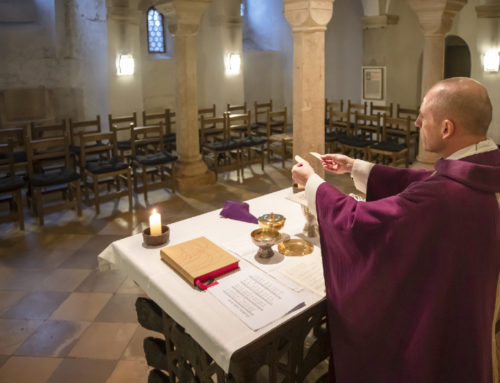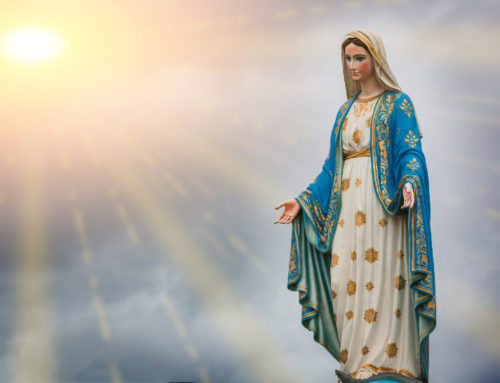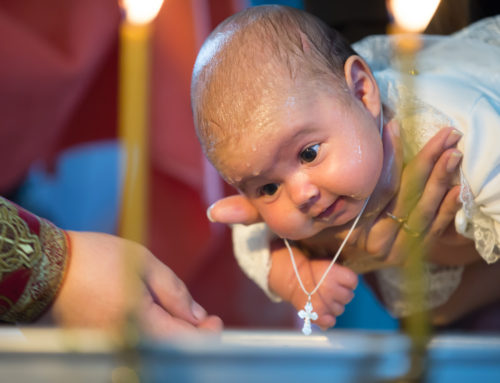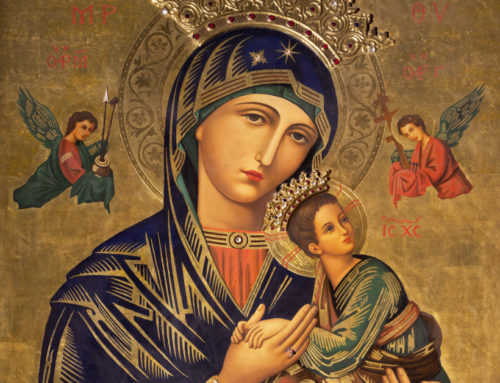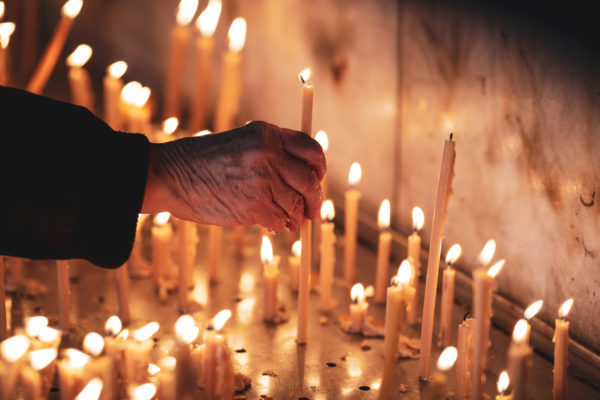
Details with the hands of an old woman lighting a candle inside a christian orthodox church in Romania.
What is a patriarch?
A patriarch is a bishop chosen to lead a particular church. In rank he is just below the pope and above the cardinals. He is a bishop or, if not a bishop at the time of his election, must be ordained a bishop. He functions in much the same way as the pope does (in fact, the pope is also called “the Patriarch of the West”).
One of the developments of the early church was the “pentarchy” or five patriarchies: Rome, Constantinople, Alexandria, Antioch, and Jerusalem. These were the major Sees of the church with, of course, the “primacy of honor” granted to Rome.
Today in the Catholic Church the patriarchs are the Patriarch of the West, the Pope of Rome, the Armenian Patriarch, the Coptic Patriarch (technically the Patriarch of Alexandria), the Maronite Patriarch (Antioch), and Melkite Patriarch (also Antioch), and the Syrian Church (also Antioch). For completeness sake, we should also note that the Antiochian Othrodox Patriarch and the Syrian Orthodox Patriarch also claim Antioch. so, this city where the followers of Christ were first called “Christians” has no less than five patriarchs!
While we’re on this topic, we should also note that there are some honorific patriarchal Sees. The first of these was set up by the Crusaders in Jerusalem. The bishop who heads that diocese has the honorary title of Patriarch of Jerusalem. he is, of course, not a patriarch, because no patriarch can be under another patriarch’s authority, and the pope is the Patriarch of the West. This is why we qualified the understanding of the Eastern patriarchs being “under” the pope in a previous post. they are in communion with him and, by virtue of that communion, grant him certain juridic power over them.
Other minor or honorary patriarchates include Venice (which is, itself, a combination of two honorary patriarchates, Aquileia and Grado) and Lisbon. Technically, there is still an honorary patriarch of Constantinople, Antioch, West Indies, and East Indies, although no one is assigned to these titular patriarchates.
What are the clerical ranks in the Eastern Churches?
The ranks of bishop, priest, and deacon are found in all Catholic Churches, whether Eastern or Latin. the Eastern Churches have, however, retained the minor orders, especially the subdiaconate, which, for many, is a permanent order – they do not progress to the diaconate or the priesthood.
As an historical note, these minor orders were porter, lector, exorcist, and acolyte. The major orders were subdeacon, deacon, and priest. Following Pope Paul VI’s directive (in the moto proprio Ministeria Quaedam, August 15, 1972), the minor orders and the major order of subdiaconate were suppressed in the Latin Church. The ministries of lector and acolyte were created, and the major orders were redefined as deacon, priest, and bishop. A man enters these ministries not by ordination, but by installation.
In general, the next “grade” of cleric is the reader, which exists in all Eastern Catholic Churches. There is no equivalent to porter or exorcist, and the functions of the Latin Church’s acolyte are mostly done by the subdeacon in the Eastern Churches.
Entrance into the clerical state takes place with tonsure, that is, the cutting of some hair by the bishop.
Excerpt from Faulk, Edward. 101 Questions and Answers on Eastern Catholic Churches. (Paulist Press: Mahwah, NJ) 2007.

